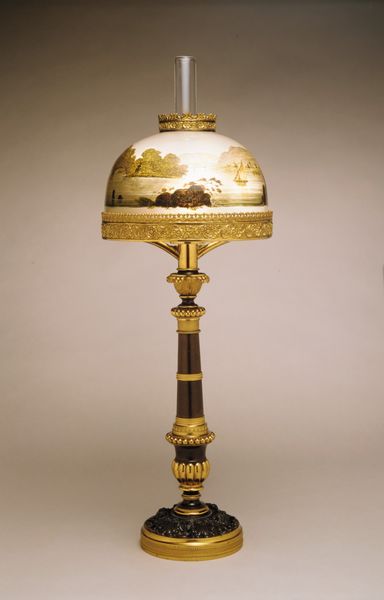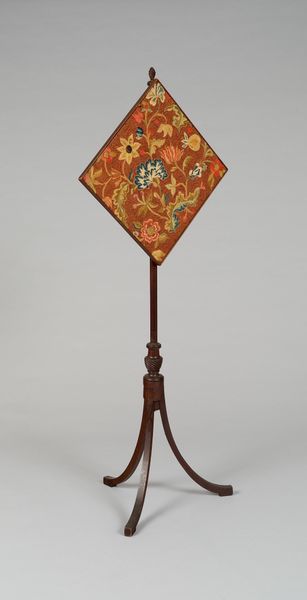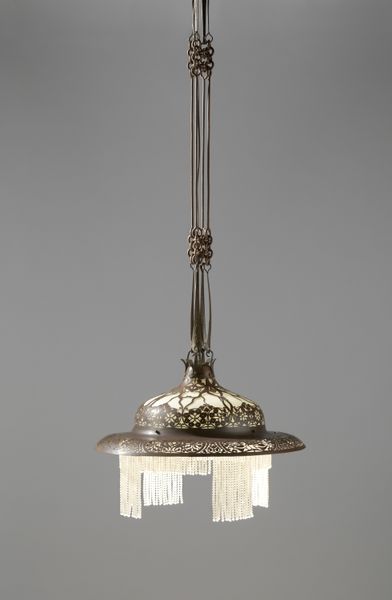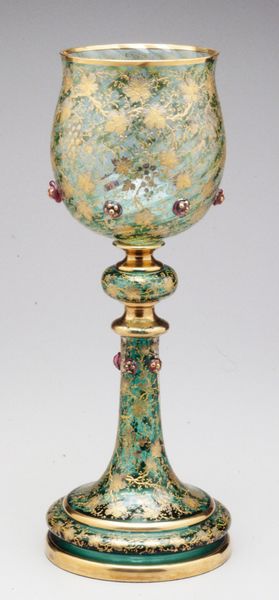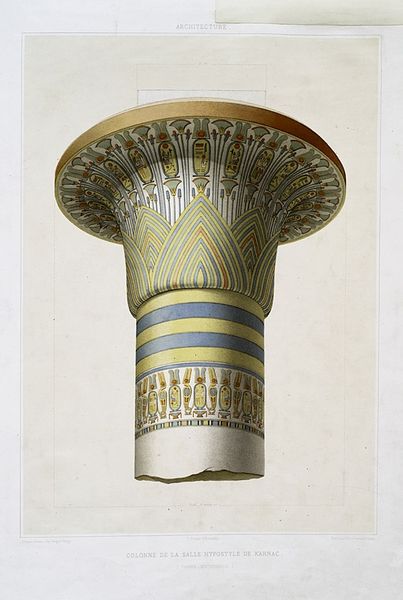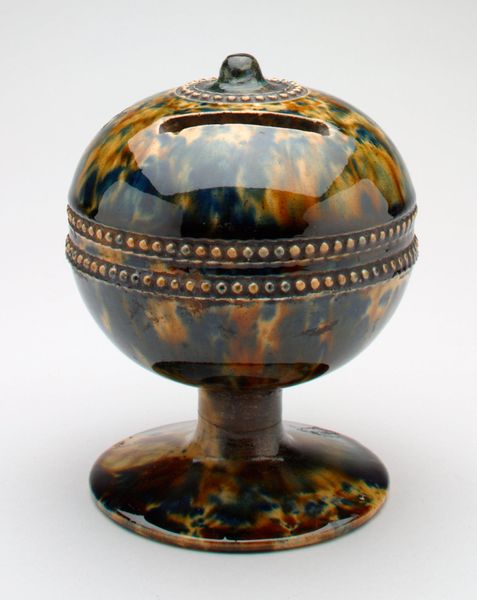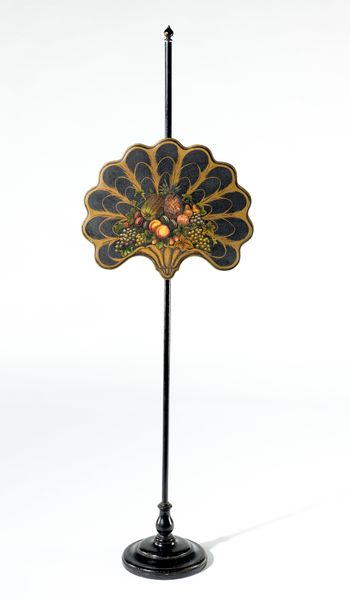
metal, bronze, glass
#
art-nouveau
#
metal
#
bronze
#
glass
#
decorative-art
Dimensions: 29 x 16 1/2in. (73.7 x 41.9cm)
Copyright: No Copyright - United States
Curator: What a delightful discovery! Before us, we have a "Lamp," crafted around 1905 by Leopold Bauer, now residing in the Minneapolis Institute of Art. Editor: It evokes such a serene underwater world. The shimmering blues and greens, the subtle patterns on the shade—it's almost like looking into a tranquil lagoon. Curator: Indeed. Bauer’s employment of bronze and glass reveals the broader turn towards incorporating such "industrial" materials into "high" decorative art in the era. It marks the democratizing influence of mass production and new markets catering to a rising middle class with novel tastes. Editor: I'm fascinated by the craftsmanship evident in shaping and embellishing both the glass shade and the bronze base. The textured surfaces aren’t merely decorative—they seem to mimic natural forms, reflecting a yearning for the organic amidst the rapid urbanization of the time. Curator: Absolutely. Museums and galleries embraced such objects, displaying functional design alongside paintings and sculptures. Such items reinforced narratives about national artistic prowess in manufacturing at major industrial fairs and national exhibitions, where prizes and commissions consolidated reputations and trade networks. Editor: Do you think that lamps such as these could represent an intimacy with personal, interior, environments at that period? How does mass-manufacture inform such notions about status and individuality? Curator: Certainly, such design reflects an interest in a mass produced ideal, filtered through Arts and Crafts values in respect of artisanal handcraft, as the burgeoning professional classes wished to distance themselves both from industrial squalor, and the excessive aristocratic ornamentation. Editor: Looking at this lamp, I wonder how the light diffused through the patterned glass would have impacted the atmosphere of the room it occupied. It probably changed entire spatial experience... Curator: And shaped aspirations for beauty, functionality, and order, distributed via new avenues like interior design and architecture that were democratized by burgeoning magazines dedicated to these interests. It helped shape and manage class aspiration. Editor: It is compelling how close observation leads one to appreciate what a decorative object can tell us about social changes at the time, right down to materials and production models available to the artist and how these were subsequently absorbed. Curator: Yes. It also makes me wonder how it may look in other environments. Let's examine how future shows and curation may interpret and display objects of design.
Comments
No comments
Be the first to comment and join the conversation on the ultimate creative platform.

